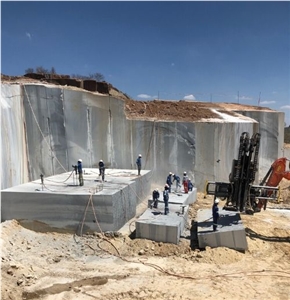Uncovering the Rich Background and Sustainable Practices of Granite Quarrying
As we depend on the precipice of discovering the complex tapestry of granite quarrying, a journey via time exposes not just the physical act of extracting rock yet also the social and historic significance woven right into the extremely material of this practice. From the old origins that laid the foundation for contemporary quarrying techniques to the sustainable practices that are forming the future of this market, each sculpt mark on granite surfaces tells a tale waiting to be unearthed (granite quarries in south africa). The legacy of granite quarrying stretches far beyond plain extraction; it is a testimony to human ingenuity, resilience, and the enduring attraction of this impressive stone
Old Beginnings of Granite Quarrying
Going back to old civilizations, the technique of quarrying granite has been an integral component of human background and building improvement. The earliest proof of granite quarrying dates back to ancient Egypt, where massive pyramids and elaborate sculptures were crafted from this sturdy stone. The Egyptians used primitive tools to extract granite blocks from quarries, showcasing the value of this material in their monumental constructions.
Moving on in history, the Greeks also made considerable contributions to the quarrying of granite. The Greeks made use of granite in numerous architectural wonders, such as temples and statues, showing their skill in shaping and sculpting this sturdy stone. The Romans additionally fine-tuned the techniques of quarrying granite, using sophisticated devices like knives and hammers to extract and form granite for their iconic frameworks.
Through the centuries, the technique of quarrying granite has progressed, with modern-day innovations enhancing performance while keeping the timeless charm of this all-natural rock - granite quarries in south africa. From ancient people to contemporary building contractors, the legacy of granite quarrying remains to form our world
Evolution of Quarrying Strategies
The advancement of quarrying methods has been noted by a continual development in the direction of higher performance and accuracy in extracting granite. From the fundamental approaches used by our forefathers to the sophisticated modern technologies made use of in modern-day quarrying operations, the sector has actually gone through considerable advancements. Early quarrying methods included manual work with standard devices such as blades, hammers, and wedges to remove granite blocks from the earth. As people progressed, techniques like fire-setting and primitive dynamites were introduced to help with the extraction process.
In more current times, the advent of machinery revolutionized the quarrying market, making it possible for much faster extraction prices and enhanced performance. Technologies such as diamond cable saws, high-pressure water jets, and pneumatically-driven drills have ended up being standard in modern quarries, allowing for precise cutting and lowered waste. Furthermore, innovations in computer-controlled equipment and 3D modeling have actually optimized quarrying procedures, resulting in very little environmental influence and improved sustainability techniques. As the need for granite continues to rise, the evolution of quarrying strategies stays integral to conference industry needs efficiently and sustainably.
Cultural Importance of Granite
Granite holds a profound cultural importance throughout various worlds because of its enduring existence in building work of arts and admired monoliths. From the stunning pyramids of Egypt to the intricate carvings of the Angkor Wat temple in Cambodia, granite has actually been a product of option for revealing grandeur and durability in cultural heritage. In old Rome, granite columns decorated temples and public structures, signifying stamina and durability. The cultural significance of granite extends beyond its physical characteristics; it personifies strength, security, and eternity, making it an icon of withstanding traditions and traditions.

Sustainable Practices in Quarrying
Among the abundant history of granite quarrying and its cultural significance lies an expanding focus on sustainable methods within the sector. As ecological understanding and concerns about resource deficiency have heightened globally, the quarrying industry has progressively welcomed sustainable approaches to minimize its effect on the atmosphere and surrounding neighborhoods.

Additionally, reclamation and rehab of quarry sites post-extraction are essential to sustainable techniques. By recovering quarried locations to an all-natural or advantageous state, such as producing wildlife environments or recreational spaces, quarriers can balance out the environmental footprint of their procedures and contribute positively to the neighborhood environment.
Heritage of Granite Quarrying
With a historical backdrop steeped in craftsmanship and industrial development, what enduring effect has granite quarrying left on the landscape of modern-day society? The heritage of granite quarrying transcends mere extraction methods; it has formed architectural wonders, city landscapes, and social heritage worldwide. The sturdy nature of granite has made it a favored choice for monoliths, structures, and infrastructure, standing as a testament to the skill and creativity of quarry employees throughout generations.
Furthermore, the financial footprint of granite quarrying can not be forgotten. The sector proceeds to offer job opportunity and drive local economic situations in important site areas where granite removal is common. It has actually additionally spurred technical innovations in quarrying techniques and equipment, leading to much more efficient and lasting techniques.
In terms of sustainability, the heritage of granite quarrying consists of efforts to alleviate ecological impacts via recovery tasks and responsible resource administration. By stabilizing financial passions with environmental stewardship, the market aims to make certain that future generations can proceed to profit from this enduring natural deposit.
Verdict
